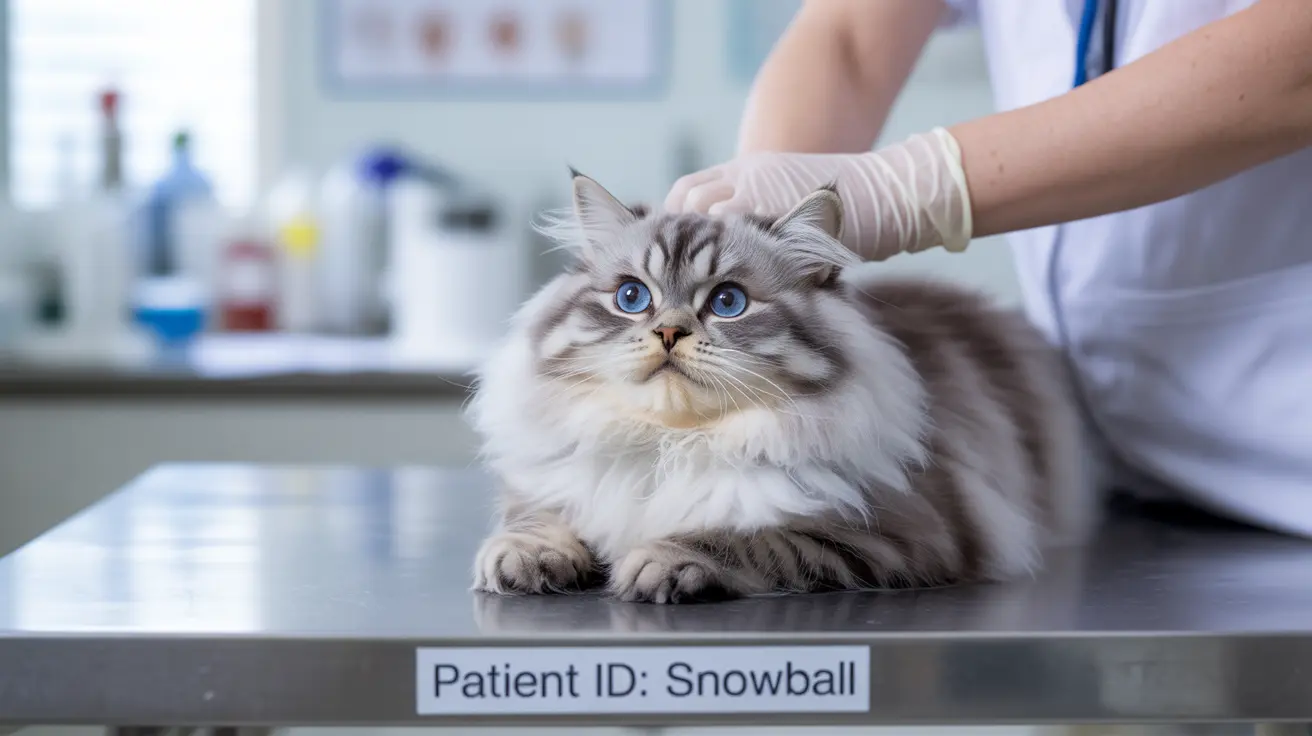What is Hydrocephalus in Cats?
Hydrocephalus occurs when cerebrospinal fluid builds up within the brain's ventricular system. This excess fluid creates pressure on the brain tissue, potentially causing various neurological symptoms and complications. The condition can be either congenital, meaning present at birth, or acquired later in life due to various factors such as infection, trauma, or tumors.
Common Symptoms and Warning Signs
Cats with hydrocephalus may display various neurological symptoms that can range from mild to severe. Early recognition of these signs is crucial for timely intervention:
- Enlarged, dome-shaped head (particularly in kittens)
- Behavioral changes and mental dullness
- Difficulty walking or poor coordination
- Vision problems or abnormal eye movements
- Head pressing against walls or furniture
- Seizures
- Lethargy or depression
Diagnosis and Medical Assessment
Veterinarians use several diagnostic tools to confirm hydrocephalus in cats:
- MRI or CT scans for detailed brain imaging
- Ultrasound (in kittens with open fontanelles)
- Neurological examinations
- Blood tests to rule out other conditions
- CSF analysis when appropriate
Treatment Approaches and Management
Treatment options for cats with hydrocephalus typically include:
- Medical management with medications to reduce CSF production
- Anti-inflammatory drugs to decrease brain swelling
- Diuretics to help manage fluid buildup
- Surgical intervention through ventriculoperitoneal shunting in severe cases
- Regular monitoring and adjustment of treatment plans
Long-term Care and Prognosis
The long-term outlook for cats with hydrocephalus varies depending on several factors, including the underlying cause, severity of symptoms, and response to treatment. Some cats can lead relatively normal lives with proper medical management, while others may require more intensive care or face a more guarded prognosis.
Frequently Asked Questions
What are the common signs of hydrocephalus in cats that owners should watch for?
The most common signs include an enlarged head (in kittens), unusual behavior, difficulty walking, vision problems, head pressing, seizures, and lethargy. Any combination of these symptoms warrants immediate veterinary attention.
How is hydrocephalus diagnosed in cats, and what role do MRI and CT scans play?
Diagnosis typically involves advanced imaging techniques, with MRI and CT scans being the gold standard. These scans allow veterinarians to visualize brain structure, fluid accumulation, and potential underlying causes. Additional diagnostics may include ultrasound in young kittens and neurological examinations.
What treatment options are available for cats with hydrocephalus, and when is surgery necessary?
Treatment options include medical management with medications to reduce fluid production and inflammation, and surgical intervention through ventriculoperitoneal shunting. Surgery becomes necessary when medical management fails to control symptoms or in severe cases with significant fluid accumulation.
Are certain cat breeds more prone to hydrocephalus, and can it be inherited?
Yes, some breeds show higher predisposition, including Siamese, Persian, and Manx cats. While most cases are sporadic, there is evidence suggesting genetic factors may play a role in certain breeding lines.
How can I manage the quality of life for a cat diagnosed with hydrocephalus?
Quality of life management includes following prescribed treatment protocols, maintaining regular veterinary check-ups, creating a safe environment, monitoring for changes in symptoms, and providing appropriate supportive care. Environmental modifications and consistent medication schedules are crucial for optimal outcomes.






